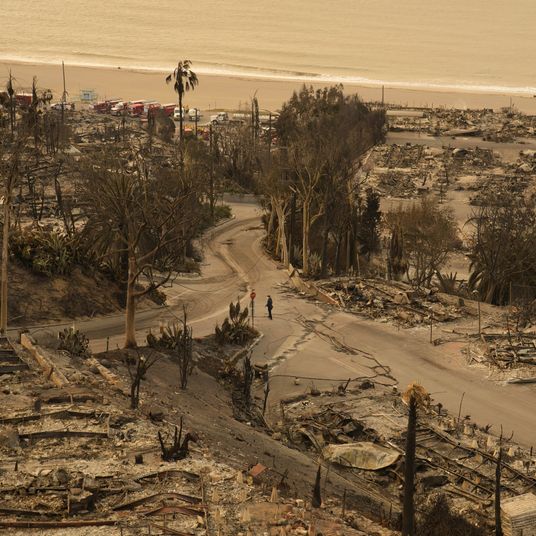
Staffers of The New Yorker who go into the office, as Condé Nast now requires them to do, have noticed something different in recent months: A documentary film crew has been showing up at the magazine with some regularity since September, sitting in on editorial meetings and interviewing people. Writers have been popping in for cameos, gamely acting out journalistic duties — taking phone calls, striding down the halls — that, to the amusement of their colleagues, are not always that interesting to watch. Still, how often does The New Yorker open its august doors to the public, much less a camera?
“Quite a while ago, I went and I met, I think for the first time, Ted Sarandos at Netflix,” said New Yorker editor David Remnick. “At a certain point he said, ‘You know, there should be a documentary about The New Yorker.’ And I kind of filed that away. Then as we were approaching a hundred years, I kind of raised it.” The Netflix documentary, directed by Marshall Curry and executive produced by Judd Apatow, is built around the months leading up the making of the 100th anniversary issue (out February 10) but also explores the history of the magazine through its most significant articles, covers, and cartoons. In addition to talking with a variety of editors and writers — such as Françoise Mouly, the longtime editor of the covers, and Emma Allen, the cartoons editor — the crew has been filming with Jon Lee Anderson in Damascus as he covered the fall of the Assad regime.
Remnick, of course, is a central character. The crew was in his apartment on Monday, interviewing him while he took in Trump’s triumphant inauguration. “I’ll confess, it’s an interesting and unnerving and instructive process to get written about, much less to get filmed, when you’d spent your entire life on the other end of the pencil, as it were,” said Remnick.
He is also a central character in a parallel drama that has been unfolding while the crew has been shooting, and that has less to do with The New Yorker’s history than its future. Remnick, 65, has been editor for more than a quarter of the century that The New Yorker is celebrating. “There had been a general feeling that the 100th was a natural time for David to leave,” one New Yorker staffer said. “But I think that over the past couple of years, as it grew closer, instead of people being excited to speculate about who might be the next editor, they became much more defensive in those conversations — like, Oh my God, what if he goes?”
“My hope for the anniversary is that it propels another hundred years, quite frankly,” Remnick told me. “I’ve been doing this job for a while and I’m always mindful — and any publication that’s been around for a while is mindful — you never want to be a museum of yourself.”
The centenary celebrations will include an exhibit at the New York Public Library featuring rare manuscripts, letters, and other archival materials; a Film Forum series of movies inspired by work from the magazine’s pages, such as In Cold Blood and Brokeback Mountain; and an exhibit of the magazine’s iconic covers. There will be an anniversary party for magazine staff and longtime contributors on February 25, at Jean’s, the sceney restaurant on Lafayette with a subterranean club. The magazine itself will offer an anniversary-inspired issue every quarter, including one that is New York–themed this spring, culminating with the release of the documentary toward the end of the year. But just as the magazine is going big on celebrating itself, Condé Nast has never been smaller, thrusting The New Yorker’s succession issues into the spotlight and casting an anxious pall over the proceedings.
After decades of being in the red and bankrolled by Condé Nast’s powerful owner, S.I. Newhouse, The New Yorker is today, along with Vogue, one of Condé’s more successful titles. The publisher has over the past decade been in a kind of managed decline, struggling to find profits, centralizing key operations, and condensing publications when not shuttering them altogether. Pitchfork, as of last year, is overseen by GQ editor-in-chief Will Welch, and the editor-in-chief of Allure now also oversees Self. The New Yorker, with its loyal readership of 1.24 million paying subscribers across digital and print and intellectual prestige that continues to attract the industry’s top writers and editors, is a bright spot. It is also something of a sanctuary inside Condé, spared the cost-cutting efforts that over the years have whittled down the empire Newhouse built.
Until recently. In the fall of 2023, Condé cut nearly 300 people from across its dozens of titles, including, to the shock of The New Yorker, The New Yorker. Longtime satirist Andy Borowitz and culture editor Michael Agger were among the roughly dozen people laid off. This came after an earlier round of cuts in June during which four people at the magazine were laid off, prompting a staff protest. The physical magazine has correspondingly shrunk; “Goings on About Town,” which used to take up about six pages, is now only two pages. Meanwhile, The New Yorker first unionized in 2018, winning its first contract in 2021 and its second in 2024, bruising fights that divided staff and bred resentment.
All of which adds more intrigue and pressure to the question of who will be steering the ship in the uncertain years to come. Remnick is loath to discuss any specifics related to succession planning, saying he is concentrated on “the magazine now and the magazine in the future and all the things that ‘magazine’ now means.” He acknowledges his age — “I now get on the subway for a buck 45, and you should be jealous of that” — though shows no signs of slowing down, reporting from Israel and hosting The New Yorker Radio Hour on top of running the place.
Guessing Remnick’s successor is something of a parlor game among journalists, with the options ranging from The Atlantic’s Nick Thompson to the Paris Review’s Emily Stokes to the New York Review’s Emily Greenhouse (all New Yorker alums). There was a period, after the Me Too movement and the George Floyd protests, when people inside The New Yorker thought the successor would not be another white man. Maybe it would be Jelani Cobb, The New Yorker staff writer currently developing his management chops as the dean of Columbia Journalism School, or maybe even Jia Tolentino, one of the magazine’s most celebrated writers. But the pendulum seems to have swung back, I’m told, as writers Patrick Radden Keefe and Evan Osnos, both white men, have seen their odds improve among staffers.
Of course, the staffers don’t get to choose their boss. That will be left up to the powers that be at Condé, no doubt with some input from Remnick himself, who started at the magazine as a staff writer in 1992, not long after the chaotic upheaval precipitated by Newhouse’s ouster of longtime editor William Shawn. “Nothing is forever. I mean, only a fool would think otherwise,” he told me. “And I’m mindful of a patch in New Yorker history where succession and aging grew into a crisis, and we’ve just lived through a political period where it did. That won’t happen here.”
More From This Series
- Pamela Paul Is Out at the Times Opinion Section
- Inside the Century Club, Elite Media’s Watering Hole
- It’s Open Season on the Washington Post





























